Once upon a time, in the 17th century, the governor of Malabar wrote a botanical treatise. Hortus Malabaricus (Garden of Malabar) is a series of 12 tomes that highlighted the flora in the Malabar Coast and its medicinal properties; it is considered an important book on India’s plant wealth. Today, this treatise finds space in research, studies and other books and lately, in cocktails.
At Kochi’s Hortus — The Garden of Malabar, the cocktail programme is a tribute to the botanicals mentioned in the book. “It was fascinating to learn about our rich heritage and how the Malabar region was responsible for many botanicals we use today,” says owner Issac Alexander. “There’s no bigger story that needs to be told, and what better way to say it than through craft cocktails?”
Coast Guard_s Brew_Slink _ Bardot (3)
| Photo Credit:
Assad Dadan
These days, cocktails come with a garnish of history. The cocktail evolution in India is seeing rapid strides. Once a neglected part of a menu, today it is often a restaurant’s shining star. Cocktails are winning awards and propelling their bars to stardom, they are showcasing modern techniques and skills and highlighting lesser known ingredients.
Often, they tell a story. “In 2024, if you are making drinks without any thought, you won’t pique people’s interest,” says Arijit Bose, mixologist. “It is always good to have the stories to go with the drinks, so it gives the team some direction, and inspiration,” he says, adding, “There has to be a little bit of romance.”
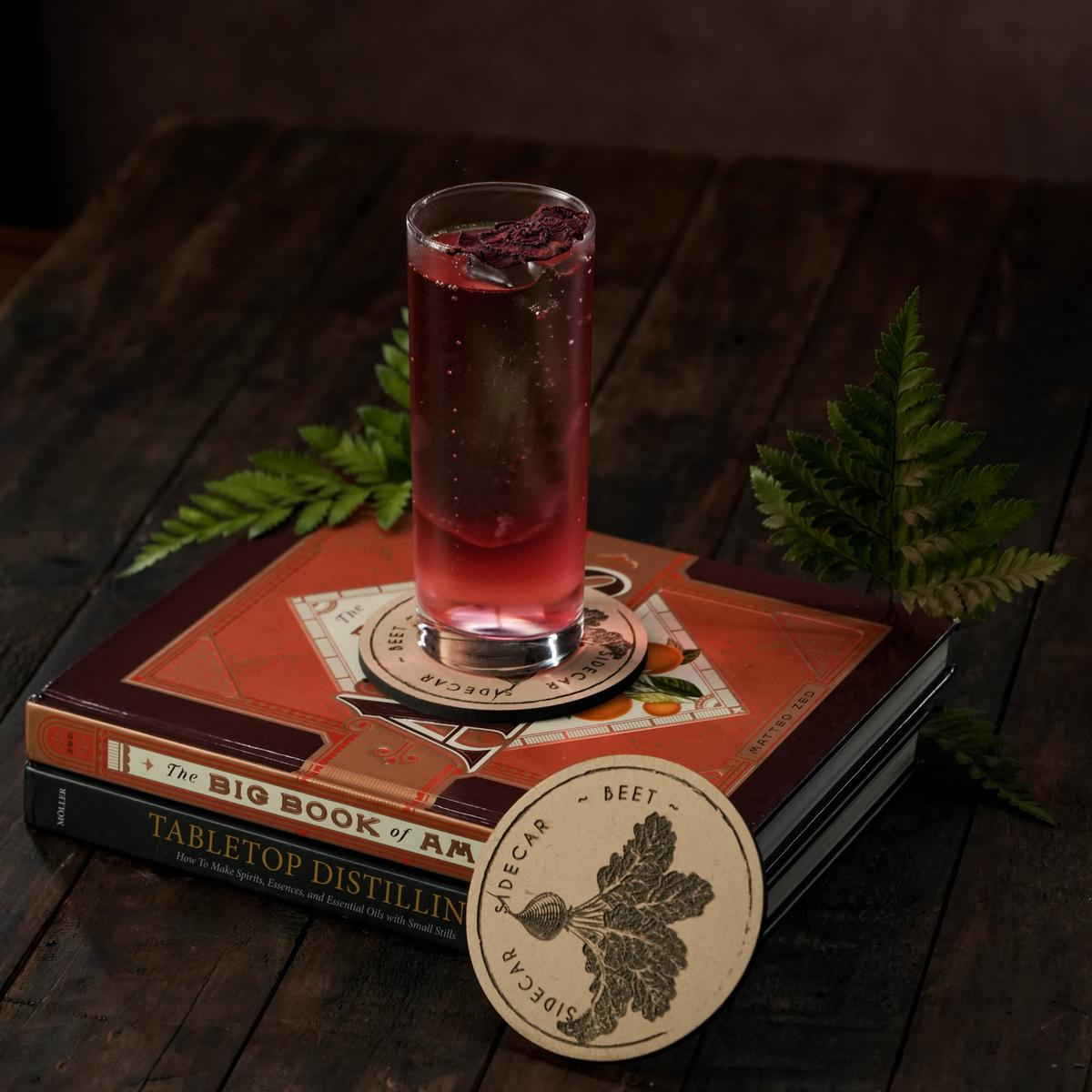
Sidecar Beet
| Photo Credit:
Special Arrangement
A nostalgia trip
The past, expectedly, is ripe for romance. Mixologists and bartenders today are seeking inspiration from different aspects of history — the heritage of a city, of a place, ingredients that have stood the test of time, and even, classic drinks.
PCO Hemp
| Photo Credit:
kutbuddin
Delhi’s Fort City Brewing’s Takht-E-Dilli menu highlights eight historical city forts, while The Library Bar at the Leela Palace has a cocktail programme that honours old classic novels and books. In Kolkata, brewpub Olterra’s In Search of Bengal, looks at unique city flavours like Bandel cheese. At Bandra Born in Mumbai, Chef Gresham Fernandes has sought inspiration from the stories of the suburb to create cocktails named after characters or legends. Patricia’s Pussycats, for example, is a vodka-orgeat-aperol cocktail inspired by the story of a foreigner named Patricia living in Bandra who would take two tiger cubs she had as pets, on walks down Carter Road.
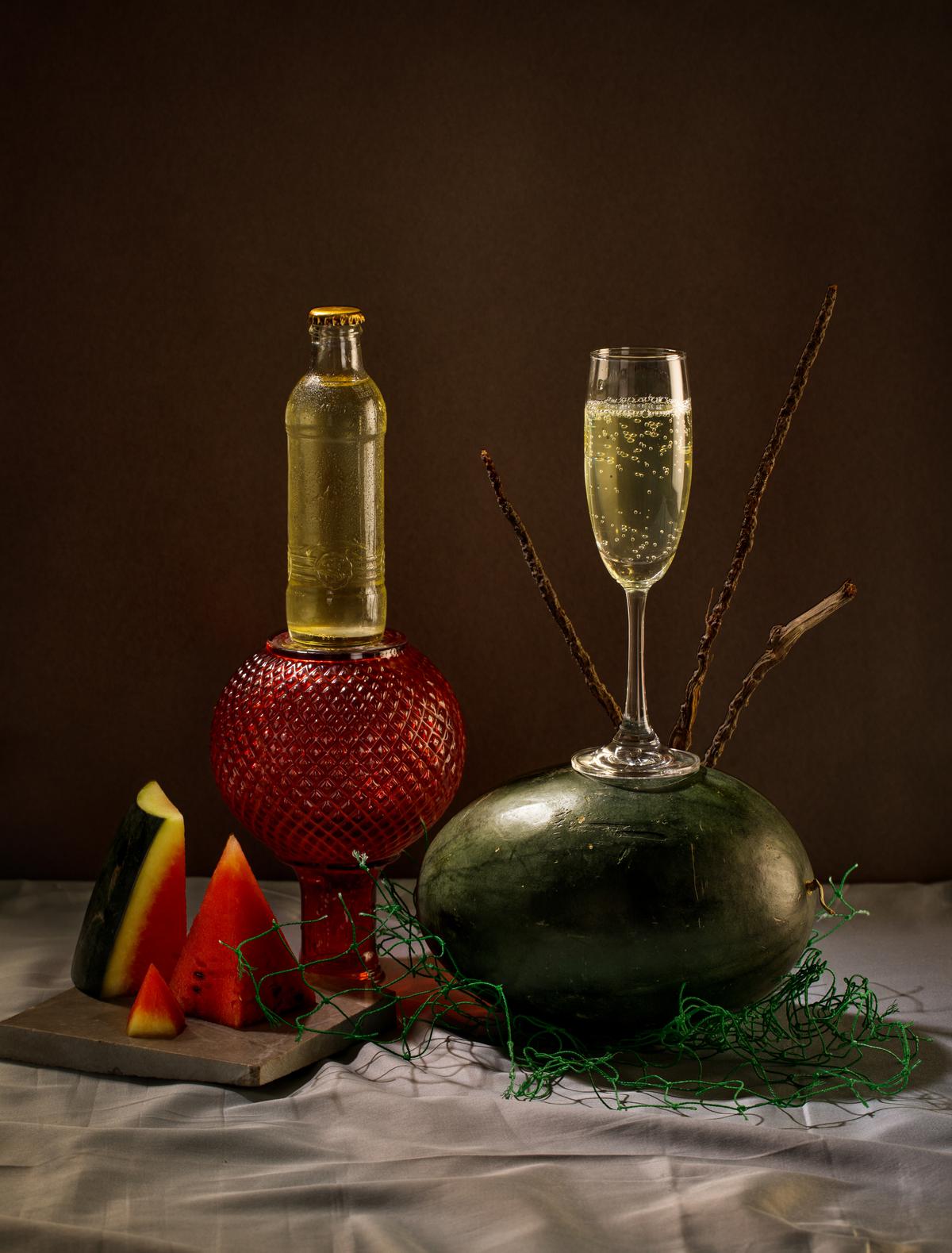
Saint Nicholas_Slink _ Bardot
| Photo Credit:
Assad Dadan
And in Goa, Slow Tide’s beverage menu is inspired by the Anjuna of the 80’s and 90’s when it was a hub for hippies. The team did six months of research, meeting locals and members of the community to learn about stories and legendary characters — 11 of whom were honoured in the first menu.
The star is Acid Erik. Erik was a popular character of the time, considered ‘Santa Claus’ because he looked like the beloved Christmas figure, and because he would hand out free gifts — of acid — to people at full moon parties. He is immortalised in a smooth punchy cocktail of tequila, watermelon yuzu and milk punch. Sujan Shetty, beverage manager at Slow Tide, says that the clear drink is decorated with an edible rice paper square, which has a drawing of chemist Albert Hofmann.
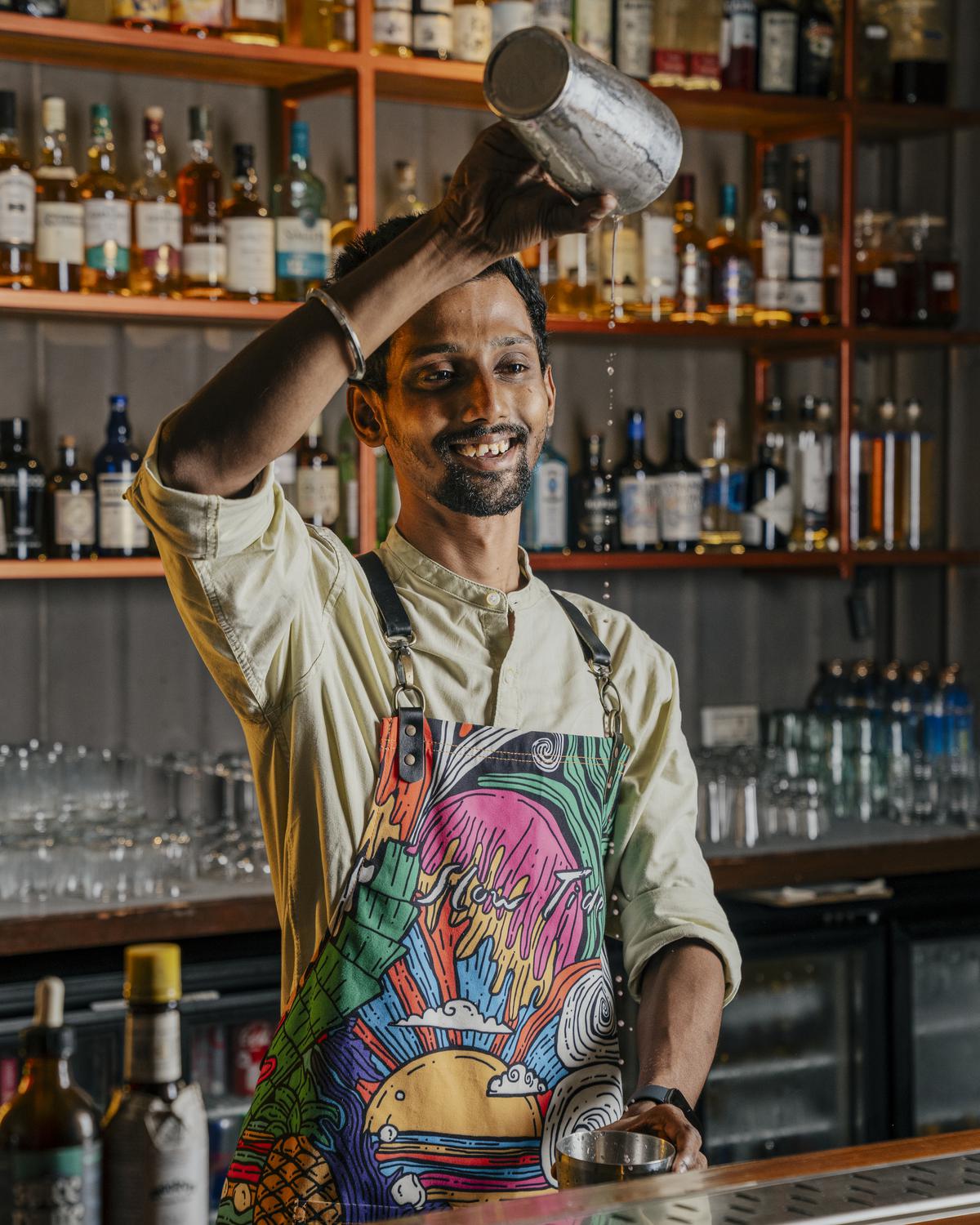
Sujan Shetty, beverage manager at Slow Tide
| Photo Credit:
Special Arrangement
There is also Berlin Peter — a take on Garibaldi with kokum-infused tequila and orange juice, named after Peter, who was a fan of Ganga Jamuna (sweet lime and oranges); and Sailor Fred, a banana (tiki-style) infused rum, named after a (still-living) sailor who sailed from Anjuna to South Africa in a fishing boat. “People who know the history of the place understand the menu, the rest always want to hear the stories behind the names,” says Sujan.
Elsewhere, on another nostalgia trip is the menu at PCO Mumbai, called An Ode to Textiles. “It seeks inspiration from its location, NRK House, and its rich history of India’s most exquisite fabrics,” says head mixologist, Vishal Tawde. “This concept was aimed at paying tribute to the dedicated individuals who once worked here, as well as to celebrate the diverse array of fabrics that played an important role in the area’s heritage.”
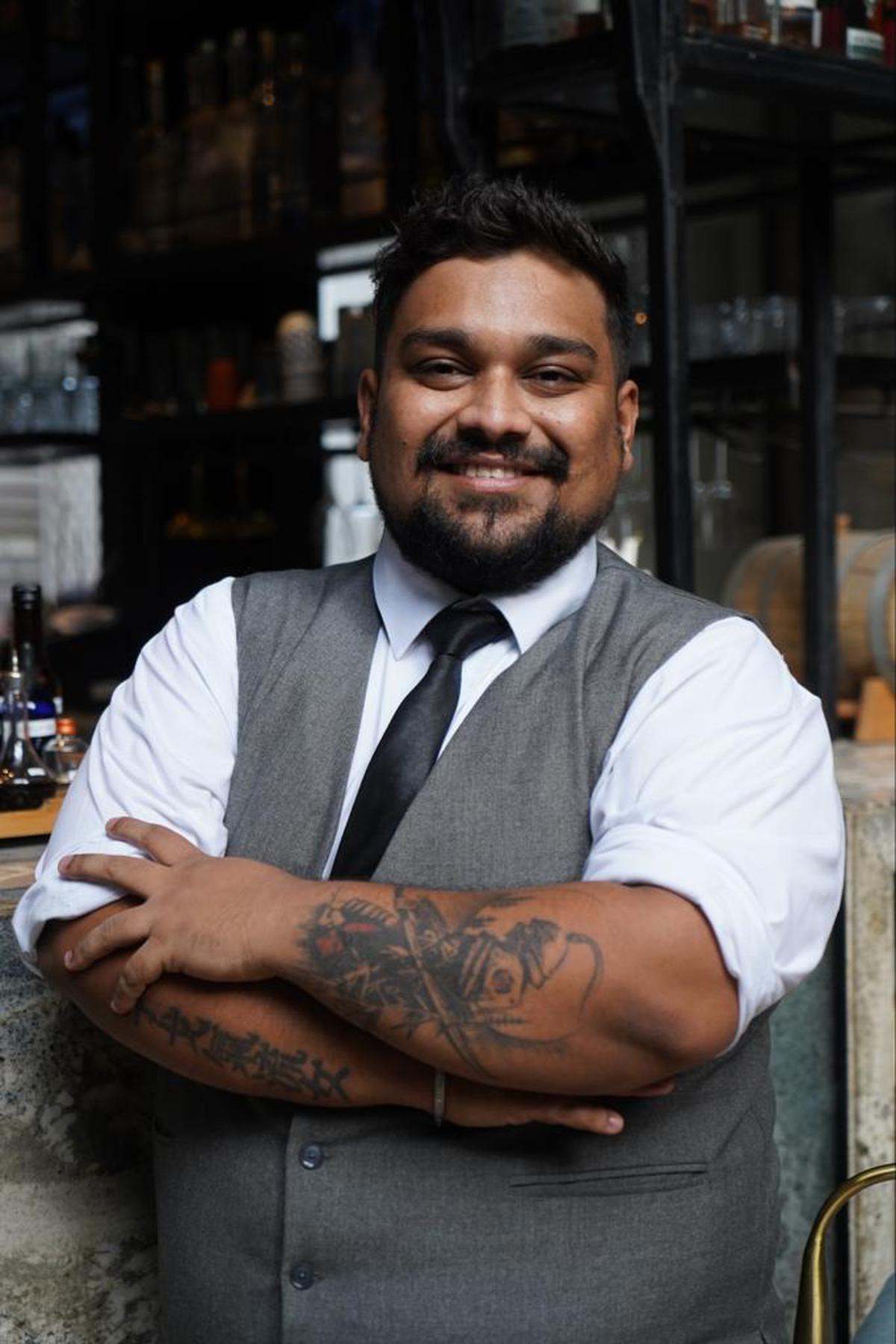
Vishal Tawde, head mixologist, PCO Mumbai
| Photo Credit:
Special Arrangement
The team dipped into stories of the fabrics, their origins, and their evolution. “We sourced ingredients from the regions associated with each fabric and the cocktails were crafted with careful attention to the textures and colours of the fabrics,” says Vishal.
The drinks include tributes to Banarasi (using Banarasi paan with gin), hemp (jasmine tea and lemongrass from the mountains), pashmina (inspired by Himalayan provenance, they use goji berries and peaches with vodka), muslin (sometimes called cheesecloth, this cocktail is made with parmesan for roundedness of flavour), and Kanchipuram silk (traditionally woven in temples from pure mulberry silk, the drink is a nod to the halwa served in temples with ghee, cardamom, cashew, and bourbon topped with a bit of gold).
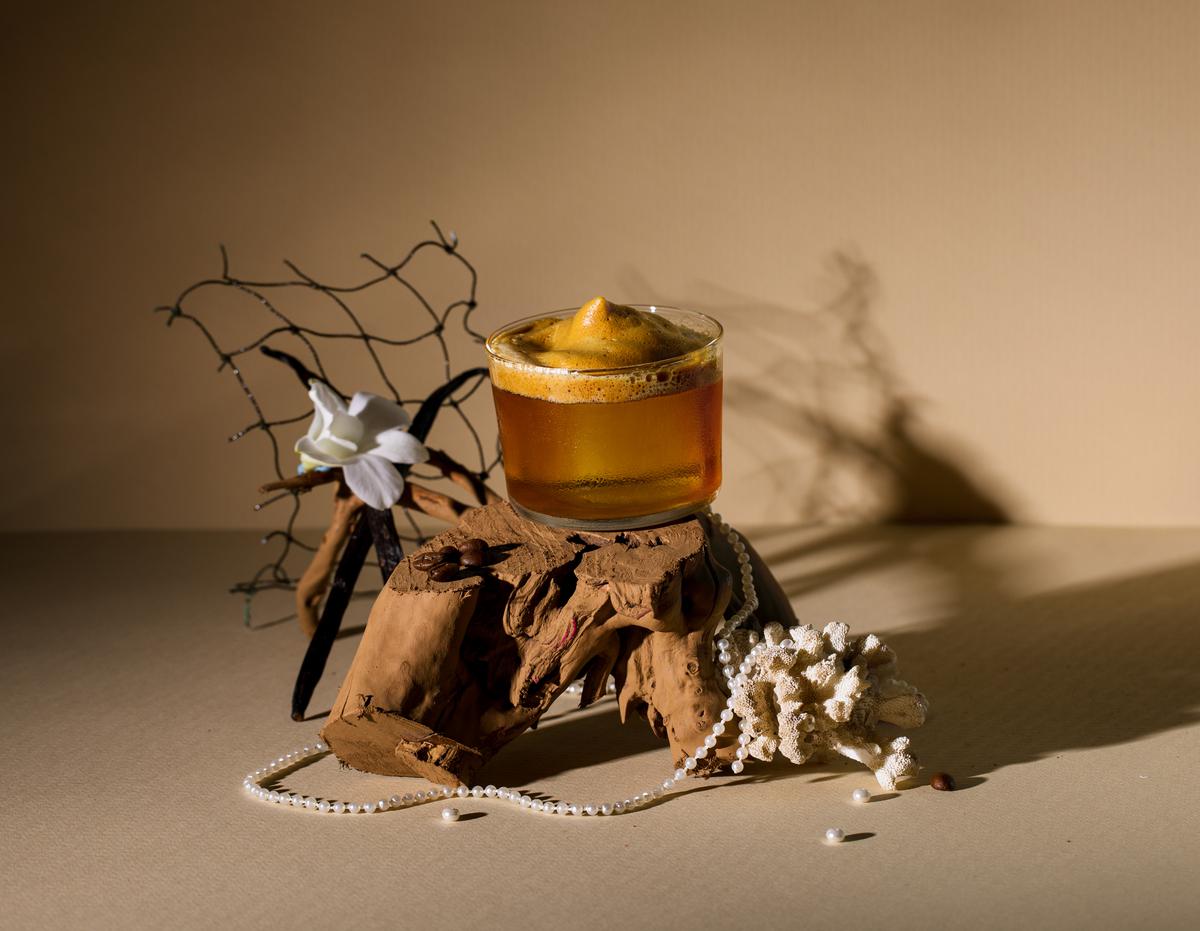
Coast Guard_s Brew_Slink _ Bardot (1)
| Photo Credit:
Assad Dadan
Also in Mumbai,the team at Slink & Bardot have dug into a different history — of the cocktails themselves. The menu, Evolutions of Cocktails, highlights popular drinks from different eras, spanning the 16th century to present day.
“We chose to focus on history because there are so many interesting facts about cocktails that few know about. For instance, the famous drink, Punch, originated in India. While some may think cocktails came from the western world, here we have a cocktail made in India,” says head mixologist, Santosh Kukreti.
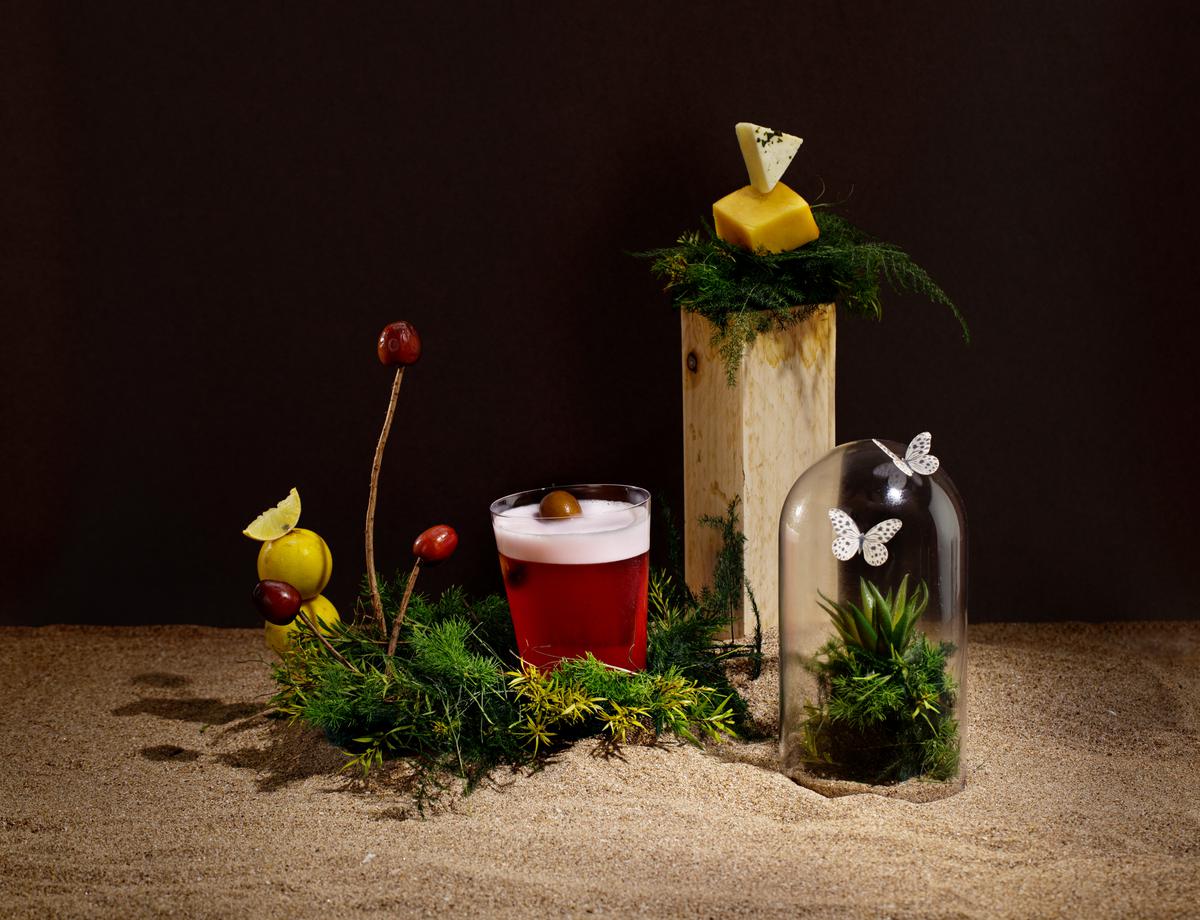
Jujube Sour
| Photo Credit:
Assad Dadan
His team has taken classical cocktails and modernised them with new ingredients and techniques. Beside the Punch (turmeric infused gin), the menu features Slink Smash (a clarified milk and beer take on the Whisky Smash), Bombay Buck (an almond milk and coconut seltzer take on buck cocktails), and Jackfruit (a feni drink with kaffir lime, lemongrass and coconut milk that smells and tastes like jackfruit).
Slink’s new limited edition cocktail (and food) menu is an ode to their Koli neighbourhood and Koliwada community and includes a Jujube Sour (with ber, and parmesan cheese liqueur, pisco), Not Alphonso (mango ginger and whisky) and Coast Guard’s Brew (vodka, coffee, and ghee).
The right ingredients
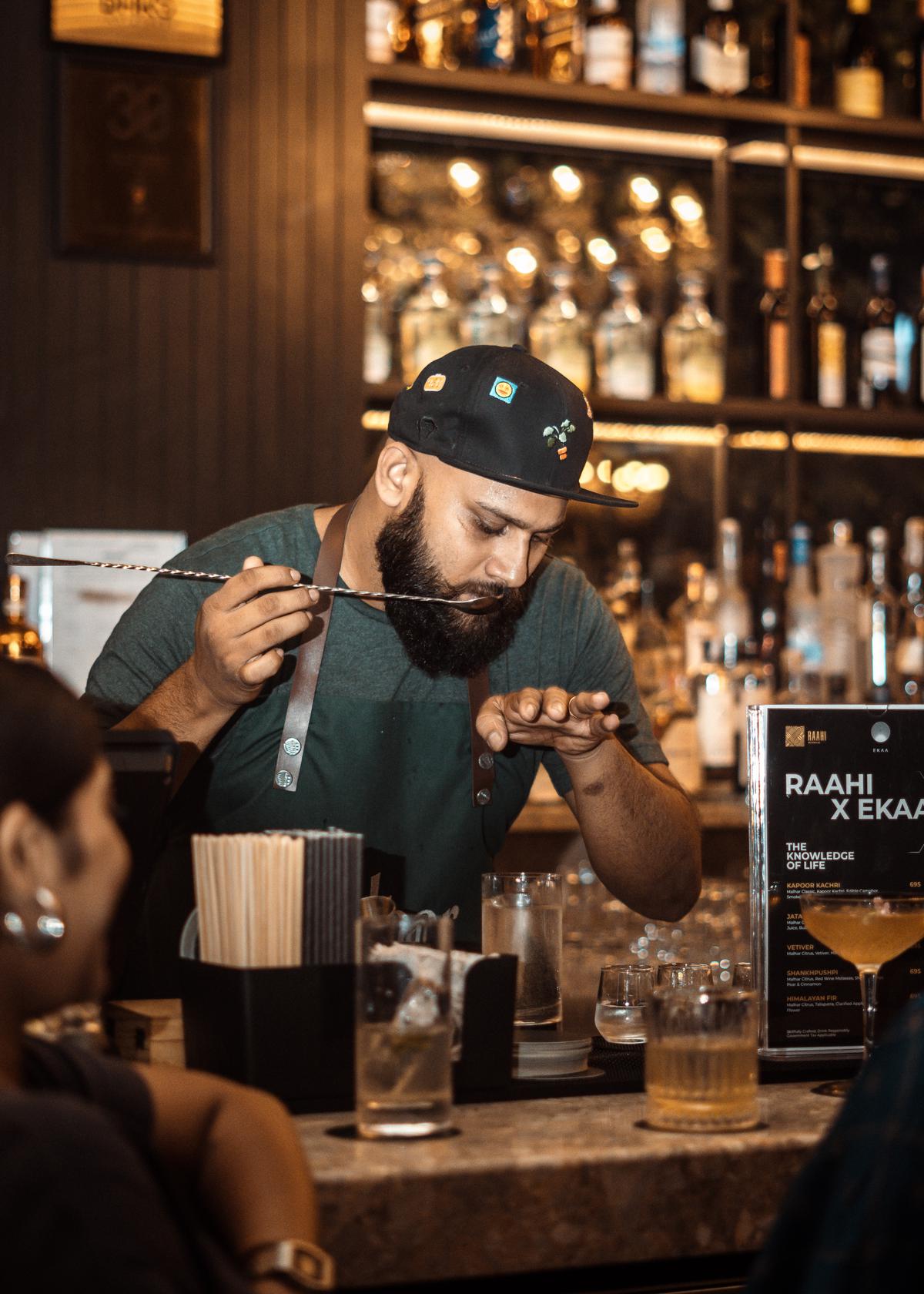
The bartender makes a cocktail at Raahi
| Photo Credit:
Special Arrangement
Among the many trends in the cocktail word, the phrase ingredient-forward is bandied about a lot. It is when one ingredient, often a spice or fruit or botanical, is given prominence. Indian ingredients, especially those that have long graced our kitchens are a surefire way to connect the past and present, while also being familiar. As a bonus, it brings attention to some little known ingredients too.
Take herbs like vetiver, jatamansi, and Himalayan fir, for example. Commonly used in Ayurvedic treatments, they are rarely part of kitchens. It is why Bengaluru’s Raahi Neo Kitchen and Bar and Mumbai’s Ekaa decided to collaborate on a limited edition menu. “These ingredients aren’t usually consumed in food, but highlighting them in cocktails allowed people to understand their taste profile. It worked very well,” says Avinash Kapoli, beverage head, Raahi.
In Delhi, Sidecar’s cocktail menu 4.0, Arq, is about invoking nostalgia through aromas using ingredients like gondhoraj, kokum, and cilantro. At Noon in Mumbai, Vanika Choudhary uses mahua liberally in her food and drinks — a Mahua Negroni with gin washed mahua seed oil and mahua leaf & flower; and Mahua Champagne with distilled mahua flower.
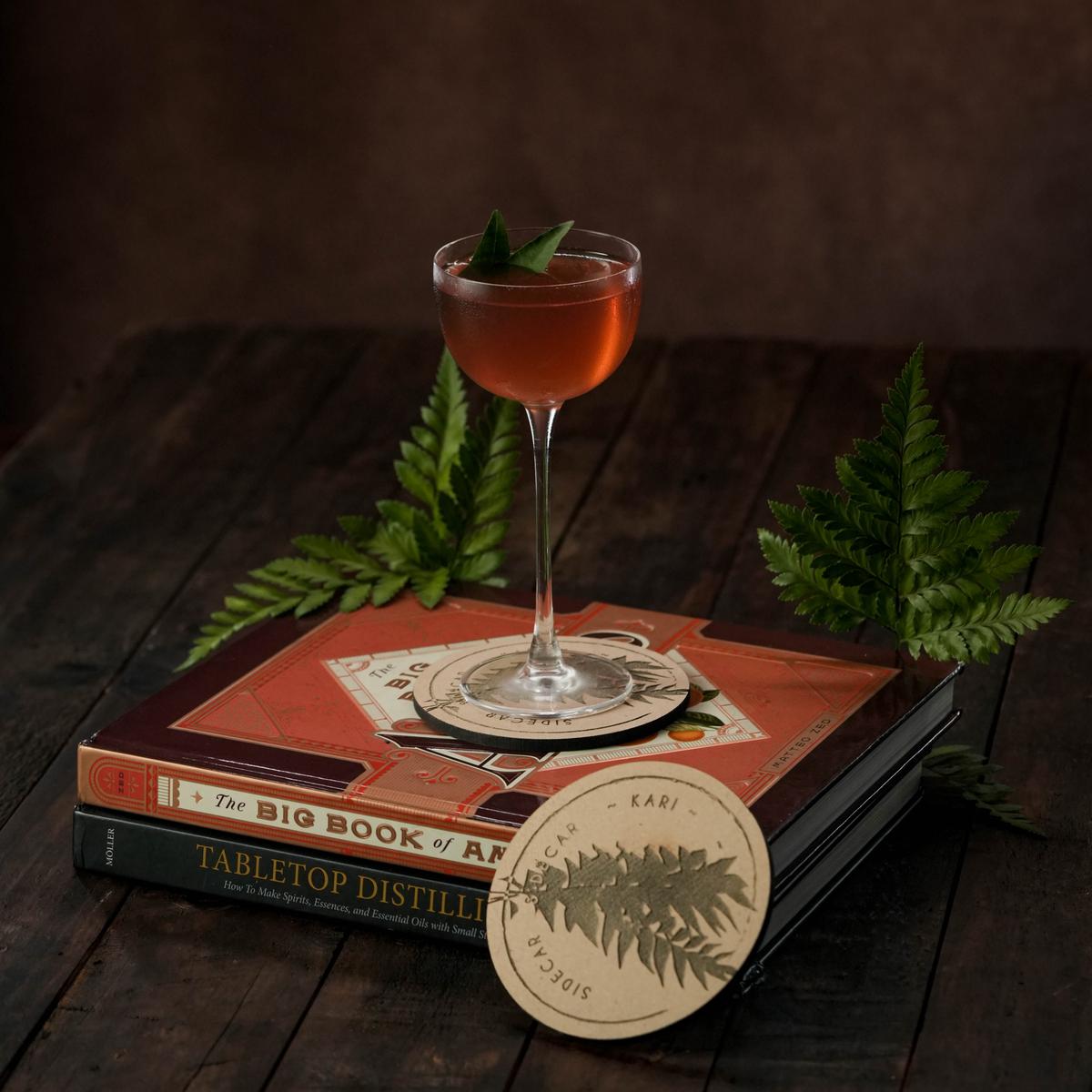
Sidecar Kari
| Photo Credit:
Special Arrangement
AMPM, Kolkata has nolen gur in its Old Fashioned; betel leaves find space in Delhi Fig & Maple’s Don’t Paint the Town Red; Coorgi kachampuli vinegar in Flower at Copitas in Bengaluru; champa in the drinks at Goa’s For the Record-Vinyl Bar; and ragi (specifically ragi malt) in the High on Ragi at Pangeo in Bengaluru.
It is Hortus’ innovative cocktail programme (curated by Countertop) that combines history, local ingredients, modern techniques and storytelling. The ingredients mentioned in the books, like green pepper, lemons, peanuts, berries, cassia leaf, and tamarind, find their way into drinks like Merchant of Muziris, and Nelcynda Sour.
Mixologist Karl Fernandes who helped curate the menu says, “The book has become part of the region’s culture, so the programme was majorly built around Kochi and ingredients available here.” Karl also worked on the craft bar RÜin Hyderabad. It is inspired by Deccan’s history. On the menu are drinks like a Zaffrani Highball, with aromatic notes with rice water and ginger that are meant to evoke the essence of a zaffrani biryani.
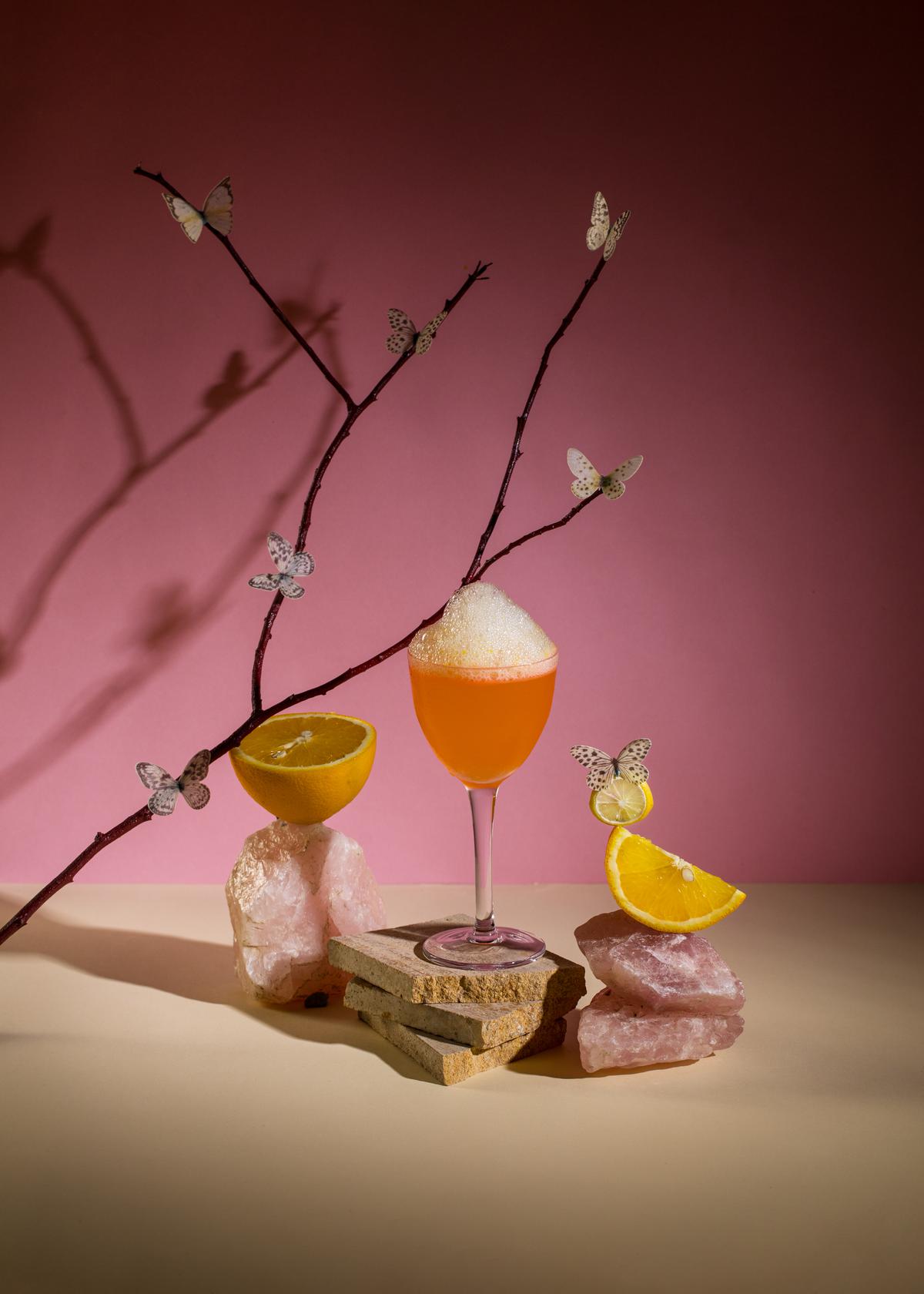
Sunset at Slink
| Photo Credit:
Assad Dadan
The scene is ripe for the interweaving of history and cocktails, where the knowledge of the past is being used with modern techniques to appeal to new-age drinkers. These cocktails are taking customers on a journey through time, culture and flavours. Says Vishal, “In the world of cocktails, having a good story is really important. It gives people something interesting to talk about and engage with too.”

.jpg)

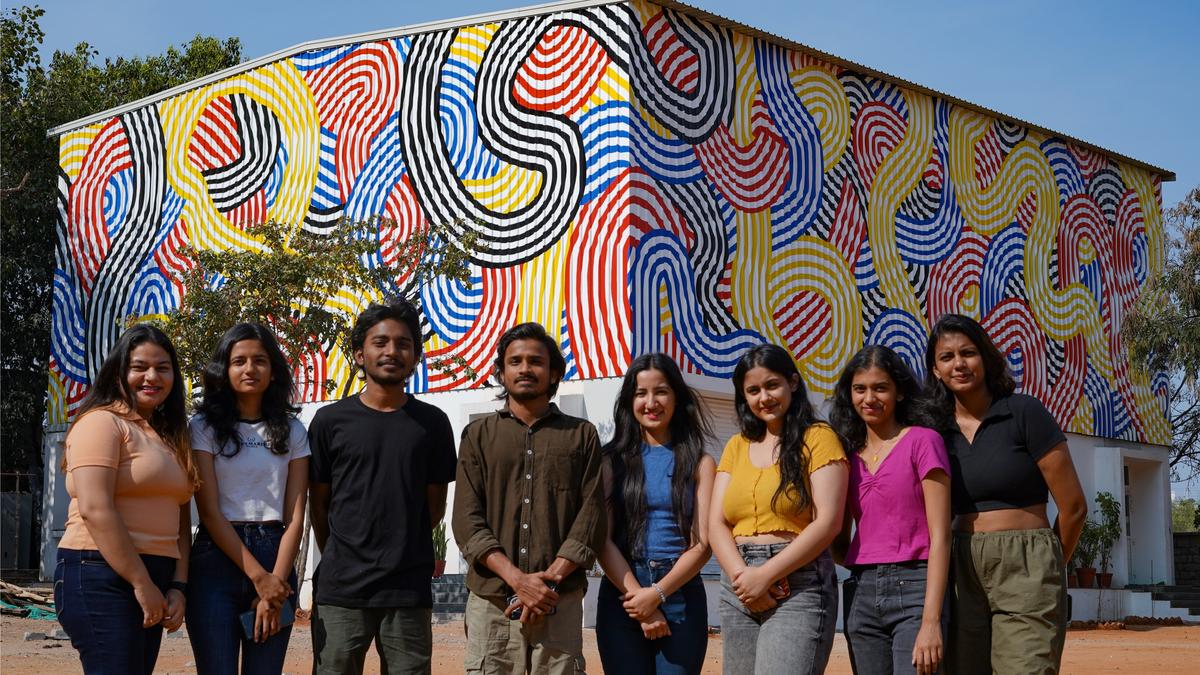.jpeg)
